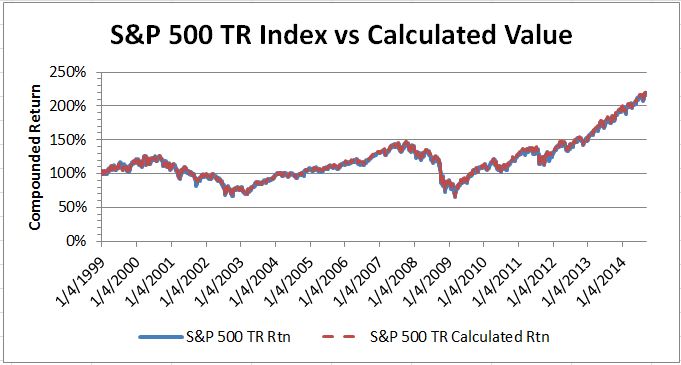Dear P123 staff or experienced users,
Apologies in advance for the long post with lots of questions, but I’m quite confused by the differences between and appropriate uses for Close(), CloseExDiv(), and Price… even after reading and rereading the forums and documentation several times. Specifically…
What does it mean that Close() reverses out future splits? Let’s say a stock is at $10 twenty bars ago, and then goes to $5 zero bars ago because of a 2:1 split. Reversing out the split to me sounds like we’re going to pretend the 2:1 split never happened and we’ll say the stock remains at $10 zero bars ago even though it’s actually trading at $5 in real life. So, that would mean that Close(10) equals $10. That seems wrong, but that’s what reversing out future splits means to me.
What does it mean that Close() is adjusted for dividends? Let’s say a stock is at $10 twenty bars ago, and then goes to $9.50 zero bars ago, and there’s a $0.50 dividend in between. To say it’s adjusted for dividends sounds like Close(0)=$10 even though the stock is actually trading at $9.50 zero days ago. This seems wrong, but that’s what adjusting for dividends sounds like to me.
If I use “Close(0)/Close(20)-1” will that 4-week percentage return be distorted by any intervening splits or dividends? Is that ratio essentially the same as either Pr4W%Chg or TotalReturn4W?
If I use Close(0)InsNetShrPurch in a sim, am I accurately estimating the $ value of net insider purchases? Or, should I use PriceInsNetShrPurch? Is the seemingly more accurate estimate “VMA(126)*InsNetShrPurch” using the right price even if there were splits that happened in the past?
Documentation states that Price is unadjusted for splits. Is it also unadjusted for dividends?
Is there a good reason to ever use CloseExDiv() or Price? What would some examples be?
CloseAdj() is the only one I think I actually understand… I think it’s basically designed to be a time series that sets the current price to be an accurate real-world price and every price before that is adjusted for future splits. Therefore, all past CloseAdj() values never actually happened in real life if there were splits. Although, I’m not exactly clear on how CloseAdj() treats dividends…
Thanks in advance to anyone who can help!
